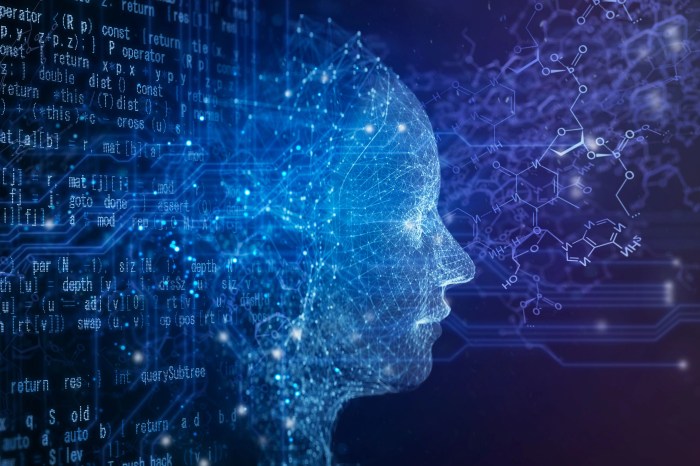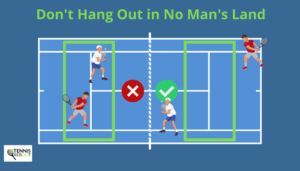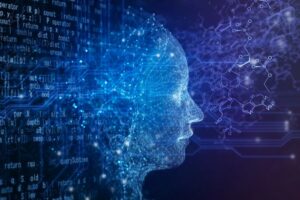
As AI in tennis coaching takes center stage, this technology revolutionizes how athletes train and improve their performance. With advancements in artificial intelligence, coaches can now leverage data analytics, machine learning, and specialized software to gain deeper insights into player development. These tools not only enhance performance but also reshape coaching strategies, allowing for a more personalized training experience.
The integration of AI technologies offers a dynamic approach to coaching that goes beyond traditional methods. From tracking player movements to analyzing match statistics in real time, AI plays a pivotal role in refining techniques and strategies, ultimately aiming to elevate the game of tennis.
AI Technologies in Tennis Coaching
The integration of AI technologies into tennis coaching is transforming how players train, analyze their performance, and enhance their skills. These technologies are not only improving training outcomes but also providing coaches with deeper insights into player potential and strategic development. As a result, AI-driven tools are becoming essential components of modern tennis coaching.AI technologies encompass a variety of applications, from performance analysis to injury prevention.
Coaches and players can benefit from advanced data analytics, real-time feedback, and personalized training plans. These tools leverage machine learning algorithms and computer vision to track player movements, shot accuracy, and overall game strategy. Some notable AI-driven tools in tennis coaching include:
Examples of AI-Driven Tools and Software
Several innovative tools have emerged that utilize AI to enhance player performance. These tools are designed to analyze gameplay and provide insights that can lead to improved training regimens. Here are some key examples:
- Hawk-Eye: Widely recognized in professional tennis, Hawk-Eye uses a complex system of cameras to track the ball’s trajectory and provide accurate line calling. It also offers players and coaches data on shot placement and movement patterns.
- SwingVision: This AI app analyzes video footage of a player’s swings to provide feedback on technique, consistency, and shot effectiveness. It helps players understand their strengths and weaknesses over time.
- CoachAI: An advanced coaching tool that uses AI to personalize training programs based on individual player performance metrics. It offers recommendations for specific drills and focuses on areas needing improvement.
The advancements in AI analytics play a crucial role in shaping coaching strategies. By leveraging the data collected through these technologies, coaches can make informed decisions about training priorities and match strategies. For instance:
Impact of AI Analytics on Coaching Strategies
AI analytics enables coaches to gain a comprehensive understanding of both their players and opponents. The ability to break down vast amounts of data allows for more strategic planning. Here are some influential aspects of AI analytics in coaching:
- Performance Insights: Coaches can analyze detailed statistics on player performance, such as shot accuracy, speed, and consistency. This data aids in tailoring training sessions to specific skill gaps.
- Match Strategy Development: By studying opponent gameplay using AI tools, coaches can develop targeted strategies that exploit weaknesses, leading to more effective game plans during matches.
- Injury Prevention: AI technologies monitor player biomechanics and movement patterns to identify risks of injury. This information helps in modifying training loads to ensure player health and longevity.
The application of AI technologies in tennis coaching not only enhances player performance but also revolutionizes how coaches approach training and strategy.
Legal Implications of AI in Sports Coaching

The integration of artificial intelligence in sports coaching, particularly in tennis, introduces several legal challenges that must be navigated carefully. As AI technologies evolve, so does the complexity of the legal landscape surrounding their use. This section explores the potential legal issues arising from the application of AI in coaching, particularly concerning data privacy and intellectual property rights.
Potential Legal Issues Surrounding the Use of AI in Coaching
The use of AI in coaching can lead to various legal complications that practitioners and organizations should be aware of. Key issues include:
- The liability of AI systems for decisions made during training or match preparation, potentially leading to disputes over performance outcomes.
- Compliance with existing regulations governing the use of technology in sports, including anti-doping rules that may be impacted by AI-driven training methodologies.
- Disputes over the ownership of data generated through AI systems, especially when athlete performance data is collected and analyzed.
Implications of Data Privacy Laws for AI Applications in Tennis
Data privacy is a significant concern when employing AI in sports coaching, as it often involves collecting and processing sensitive information about athletes. The implications of data privacy laws, such as the General Data Protection Regulation (GDPR) in Europe, must be considered:
- Athletes must provide informed consent for their data to be collected and used, which can complicate the onboarding process for AI coaching tools.
- Organizations must ensure data security measures are robust to protect athletes’ personal information from breaches, potentially leading to legal action if compromised.
- The requirement to anonymize data for analysis can limit the effectiveness of AI systems if individual performance metrics are not retained.
Intellectual Property Rights Affecting AI-Developed Training Programs
Intellectual property (IP) rights play a crucial role when discussing AI-driven training programs. The creation of unique methodologies and content through AI raises essential considerations:
- Ownership of AI-generated content must be clearly defined, particularly concerning whether the training programs are protected as copyright or patentable inventions.
- Organizations must consider potential infringement issues if AI systems utilize existing training methodologies or data without proper licensing.
- Collaboration between tech companies and coaching staff may lead to joint IP ownership, necessitating clear contractual agreements to prevent future disputes.
The Future of AI in Tennis Coaching
As technology continues to evolve, its integration into sports is becoming increasingly sophisticated. In tennis coaching, AI is set to revolutionize how players train, analyze their performance, and develop their skills. This future promises a blend of traditional coaching methods with cutting-edge technology, leading to enhanced training experiences and outcomes.The potential benefits of integrating AI into tennis coaching are substantial.
Coaches and players can leverage AI systems to analyze data in real time, providing insights that were previously unattainable. This technology can track player movements, technique, and match performance, offering tailored feedback that enhances training efficiency. However, challenges exist, such as the need for coaches to adapt their methodologies and the potential for over-reliance on technology, which could detract from the essential human element of coaching.
Predictions on AI Integration in Tennis Coaching
The future landscape of tennis coaching is likely to feature several key developments. With the increasing accessibility of AI technology, one can expect to see:
- Real-Time Performance Analysis: Coaches will have access to AI-driven analytics that provide instant feedback during training sessions and matches, allowing for immediate adjustments and improvements.
- Personalized Training Programs: AI algorithms will tailor training regimens to individual players, taking into account their strengths, weaknesses, and playing styles, thus maximizing their potential.
- Enhanced Match Preparation: AI can analyze opponents’ strategies and weaknesses through pattern recognition, enabling players and coaches to devise more effective game plans.
- Virtual Coaching Assistants: AI-driven applications may serve as virtual assistants, offering strategic insights and tips based on extensive databases of player performances.
The integration of AI into traditional coaching methods will enhance decision-making processes but requires careful consideration regarding the balance between technology and personal coaching.
Roadmap for Coaches to Incorporate AI
For coaches looking to incorporate AI into their training regimens, a structured approach is essential. This roadmap highlights crucial steps to ensure effective integration:
- Assessment of Needs: Identify specific areas for improvement in training and performance analysis where AI can be beneficial.
- Research AI Solutions: Explore various AI tools and platforms available in the market, focusing on those tailored for tennis coaching.
- Training and Familiarization: Engage in training sessions to understand how to use AI technologies effectively, ensuring all coaching staff are on board.
- Integration with Existing Methods: Develop a plan that combines AI insights with traditional coaching tactics to create a holistic training environment.
- Continuous Evaluation: Regularly assess the effectiveness of AI tools and make necessary adjustments based on player feedback and performance data.
“The future of tennis coaching lies in the seamless blend of human intuition and AI analytics, creating a new paradigm for player development.”
By following this roadmap, coaches can harness the power of AI to elevate their training methods, ultimately enhancing player performance and achieving better results on the court.
Conclusive Thoughts

In summary, the intersection of AI and tennis coaching presents exciting possibilities for the future of the sport. As this technology continues to evolve, coaches and players alike will need to adapt to the new paradigms it introduces. Embracing AI not only enhances training regimens but also prepares the tennis community for the challenges and opportunities that lie ahead.
Questions and Answers
How does AI enhance player performance?
AI enhances player performance by analyzing data from training sessions and matches, providing actionable insights that help athletes improve their techniques and strategies.
What are the common AI tools used in tennis coaching?
Common AI tools include performance analysis software, motion tracking systems, and player monitoring applications that utilize data analytics to inform coaching decisions.
Are there risks associated with using AI in coaching?
Yes, there are risks such as data privacy concerns, reliance on technology over human intuition, and potential biases in AI algorithms that can affect decision-making.
How can coaches start integrating AI into their practice?
Coaches can start integrating AI by researching available tools, attending workshops, and gradually incorporating data analytics into their training programs.
What legal considerations should be made with AI in coaching?
Legal considerations include data privacy laws, intellectual property rights for AI-generated programs, and the implications of using AI in compliance with sports regulations.





